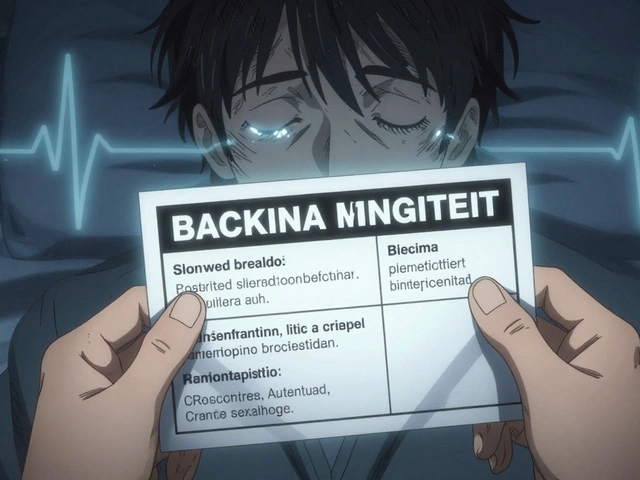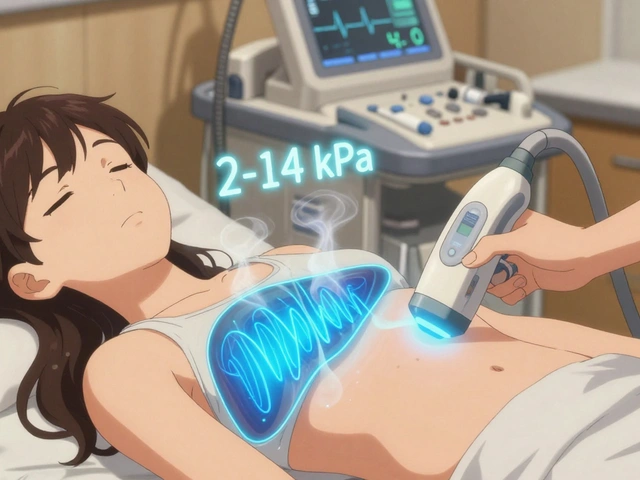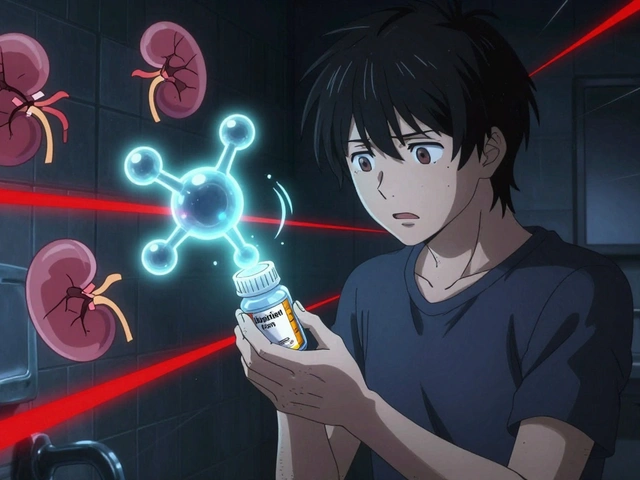For many women going through menopause, the sudden surge of hot flashes, night sweats, and sleepless nights isn’t just uncomfortable-it’s life-disrupting. Hormone Replacement Therapy (HRT) has been around since the 1940s, but its reputation has swung wildly-from being hailed as a miracle cure to being feared as a danger. Today, the science has caught up with the experience of real women. If you’re considering HRT, you need to know what’s changed, what’s safe, and how to make sure it’s right for you.
What HRT Actually Does
HRT replaces the estrogen (and sometimes progesterone) your body stops making after menopause. It’s not about slowing aging. It’s about managing symptoms that interfere with daily life. The most effective use? Relieving hot flashes and night sweats. Studies show HRT reduces these symptoms by 80-90%, far outperforming non-hormonal options like SSRIs, which only cut them by about half.
It also protects your bones. Women on HRT have a 34% lower risk of fractures compared to those who don’t take it. That’s a big deal-hip fractures in older women often lead to long-term disability or even death. HRT helps keep bones dense during the critical first few years after menopause, when bone loss is fastest.
The Big Shift: What the WHI Study Got Wrong (and Right)
In 2002, the Women’s Health Initiative (WHI) study shocked the medical world. It claimed HRT increased breast cancer and heart disease risk. Prescription rates plunged. But here’s the truth: the women in that study were, on average, 63 years old-well past the window where HRT is most beneficial.
Turns out, timing matters. If you start HRT before age 60 or within 10 years of your last period, your risk of heart disease drops by 32%. If you start later, you might not get that benefit-and could even face higher risks. The FDA updated its labeling in September 2022 to reflect this. The blanket warnings are gone. Now, guidelines say: for healthy women under 60, benefits outweigh risks.
Oral vs. Transdermal: The Safety Difference You Can’t Ignore
Not all HRT is the same. How you take it changes your risk profile dramatically.
Oral estrogen-pills like Premarin or estradiol tablets-goes straight to your liver. That increases your risk of blood clots. The numbers? About 3.7 cases of deep vein thrombosis per 1,000 women per year.
Transdermal options-patches, gels, sprays-bypass the liver. They deliver estrogen through the skin. That cuts clot risk by nearly half: just 1.3 cases per 1,000 women per year. They also lower stroke risk by 30-50% compared to pills.
For most women, especially those with a history of clotting, high blood pressure, or obesity, transdermal is the safer first choice. Many doctors still default to pills because they’re cheaper and more familiar. But if you’re starting HRT, ask about patches or gels first.
Estrogen Alone or With Progesterone?
If you’ve had a hysterectomy, you only need estrogen. But if you still have a uterus, you must take progesterone too. Why? Estrogen alone can cause the lining of your uterus to thicken-leading to cancer.
Not all progesterone is equal. Synthetic progestins (like medroxyprogesterone acetate) are linked to higher breast cancer risk. Micronized progesterone (brand name Prometrium) is bioidentical-molecularly identical to what your body makes. It’s better tolerated and carries less breast cancer risk.
How to take it? Most doctors use a cyclic schedule: 10-14 days a month. Some use continuous low-dose progesterone with estrogen. Both work. The key is matching the dose and schedule to your body’s response.

Monitoring: What You Need to Check, and When
HRT isn’t a set-it-and-forget-it treatment. You need follow-up.
Before starting: get a mammogram, blood pressure check, pelvic exam, and BMI measurement. If you have unexplained bleeding, don’t start until the cause is ruled out.
After 3 months: review symptoms, side effects, and whether the dose still works. Many women need a small tweak-too much causes breast tenderness, too little leaves hot flashes.
Annually: repeat mammogram, blood pressure, weight check, and breast exam. If you’re on estrogen with progesterone, irregular bleeding in the first 6 months is normal. If it continues beyond that, you need an ultrasound or biopsy. ACOG guidelines are clear: persistent bleeding after 6 months isn’t normal-it needs investigation.
What About Bioidentical Hormones?
You’ve probably heard about “natural” or “bioidentical” HRT. The term sounds safer, but here’s the reality: compounded bioidentical hormones-custom-mixed by pharmacies-are not FDA-approved. They’re not tested for purity, consistency, or safety. One batch might have too much estrogen. Another might have none.
The Endocrine Society says there’s no proof they’re safer than FDA-approved versions. And they’re not covered by insurance. Stick with regulated products: estradiol patches, gels, or micronized progesterone pills. They’re standardized, tested, and monitored.
Some clinics push compounded hormones because they’re more profitable. Don’t be misled by marketing. Your health isn’t a custom blend.
Who Should Avoid HRT?
HRT isn’t for everyone. Absolute no-gos include:
- History of estrogen-sensitive breast cancer
- History of blood clots, stroke, or heart attack
- Unexplained vaginal bleeding
- Active liver disease
If you have a strong family history of breast cancer, talk to your doctor about genetic testing. HRT can still be an option-but you’ll need closer monitoring and possibly lower doses.

Why So Many Women Quit
Even when HRT works, nearly one in three women stop within a year. Why? Fear of breast cancer tops the list-48% of women cite it. But here’s the data: for women under 60, the added risk is tiny. About 8 extra breast cancer cases per 10,000 women per year on combined HRT. That’s less than the risk from being overweight or drinking alcohol regularly.
Other reasons? Vaginal bleeding (22%), nausea (12-28% with pills), mood swings, or breast tenderness. Most of these fade within 3-6 months. Switching from pills to a patch often fixes nausea. Lowering the dose can ease tenderness.
Women on transdermal HRT are 30% more likely to stick with it than those on pills. If you’re struggling, don’t assume HRT doesn’t work. It might just be the wrong delivery method.
The Bigger Picture: Is HRT Worth It?
For women with moderate to severe menopause symptoms, HRT is still the most effective treatment we have. It’s not a lifelong commitment-most women use it for 3-5 years. Some need it longer, especially if they had early menopause or have osteoporosis.
Compared to alternatives: SSRIs help hot flashes, but only a little. Gabapentin helps sleep, but not the heat. Black cohosh? No strong evidence. HRT is the only treatment that reliably fixes multiple symptoms at once.
And the long-term? If you start early, you’re not just feeling better now-you’re protecting your bones, your heart, and your quality of life for years to come.
Next Steps: How to Start Smart
If you’re considering HRT, here’s your action plan:
- Track your symptoms for a month-how often do hot flashes happen? Are you waking up at night?
- Ask your doctor for a baseline mammogram and blood pressure check.
- Request transdermal estradiol (patch or gel) as your first option. Avoid pills unless you have a specific reason.
- If you have a uterus, ask for micronized progesterone-not synthetic progestin.
- Start low: 0.025mg estradiol patch or 0.5mg gel daily. Adjust after 3 months.
- Set a 3-month follow-up. Don’t wait until symptoms return.
There’s no one-size-fits-all. But with the right approach, HRT can give you back years of sleep, energy, and comfort you didn’t know you were missing.
Is HRT safe for women over 60?
For women over 60 who haven’t taken HRT before, starting now isn’t recommended. The risk of blood clots, stroke, and heart disease increases with age, and the benefits for hot flashes are less clear. If you’re over 60 and already on HRT, you can continue if it’s working well and you’re healthy-but don’t start new unless your doctor says it’s necessary for bone protection.
Does HRT cause weight gain?
HRT itself doesn’t cause weight gain. But menopause does. As estrogen drops, your body tends to store more fat around the abdomen. HRT can help prevent this shift by keeping your metabolism more stable. Some women notice bloating or water retention early on, but that usually fades. If you’re gaining weight, focus on diet and activity-not stopping HRT.
How long should I stay on HRT?
There’s no fixed timeline. Most women use it for 3-5 years to get through the worst symptoms. If you’re still having severe hot flashes or night sweats after that, it’s okay to continue. For women with early menopause (before 45), guidelines recommend staying on HRT until at least age 50-51 to protect bone and heart health. The goal is the lowest dose for the shortest time needed-not a hard stop at 5 years.
Can I use HRT if I’ve had breast cancer?
No. Estrogen fuels most types of breast cancer. Even if your cancer was years ago and you’re in remission, HRT is not safe. There are non-hormonal options for hot flashes-like low-dose paroxetine (Paxil), which is FDA-approved for this use. Talk to your oncologist about alternatives.
Will HRT make me more emotional or cause depression?
HRT often improves mood, not worsens it. Low estrogen during menopause can contribute to irritability, anxiety, and low mood. For many women, HRT helps stabilize emotions. But if you have a history of depression, start with a low dose and monitor closely. Some women report mood changes with synthetic progestins-switching to micronized progesterone often fixes it.
Are there any natural alternatives that work as well as HRT?
No. Supplements like black cohosh, red clover, or soy isoflavones may help a little, but they’re not as effective as HRT. A 2023 Mayo Clinic review found they reduce hot flashes by only 20-30%, compared to HRT’s 80-90%. They also aren’t regulated-some contain hidden hormones. If you want real relief, HRT is still the gold standard.
What’s the difference between estradiol and conjugated estrogens?
Estradiol is the same hormone your body makes. Conjugated estrogens (like Premarin) come from horse urine and contain multiple estrogen types your body doesn’t naturally produce. Estradiol is more predictable, has fewer side effects, and is preferred in modern guidelines. Most doctors now start with estradiol patches or gels, not Premarin.






10 Comments
Richard Risemberg
November 20, 2025Man, I wish my grandma had known this stuff back in the 90s. She quit HRT after that WHI scare and spent the next decade shivering through night sweats and blaming herself. Transdermal patches? Micronized progesterone? Why didn’t anyone tell her? This is the kind of clear, science-backed info that actually saves lives-not fear-mongering headlines.
Marjorie Antoniou
November 22, 2025I’m a nurse who’s helped women navigate this for 15 years. The biggest mistake? Assuming all HRT is the same. I’ve seen women cry because they were put on Premarin pills and told ‘it’s just how it is.’ Then we switched them to estradiol gel and their whole life flipped. Sleep. Mood. Energy. It’s not magic-it’s biology. And it’s fixable.
Reema Al-Zaheri
November 22, 2025As someone from India where HRT is still considered taboo, this article is a revelation. We’re taught to endure menopause like a test of character-no complaints, no medication. But the data here is undeniable: bone density, cardiovascular protection, quality of life. Why do we still treat medical science like a luxury? This should be standard education in every women’s health clinic worldwide.
Sam Reicks
November 24, 2025hrt is a big pharma scam the fda is in their pocket and the whi study was rigged to scare women into taking pills so they can sell more statins and mammograms also transdermal is just a fancy word for patch and patches leak and dont work like they say and bioidenticals are real medicine because nature knows better than lab chemists lol
Andrew Montandon
November 25, 2025Let me just say this: if your doctor still pushes Premarin pills as a first-line option, find a new doctor. Seriously. It’s 2024. We’ve had estradiol patches for decades. Micronized progesterone is safer, gentler, and mimics your body’s natural rhythm. And if you’re worried about breast cancer? The absolute risk increase is smaller than the risk of driving to the pharmacy. Stop letting fear dictate your health. Ask for the patch. Ask for the right progesterone. And if they resist? Walk out.
Paige Lund
November 27, 2025Wow. So much text. So many graphs. So many studies. So… what? I just want to stop sweating through my pillow. Can I get a TL;DR? Or do I need a PhD in endocrinology first?
Andrew Baggley
November 28, 2025For anyone reading this and thinking ‘I’m too old’-you’re not. I started HRT at 62 after my husband died and I was falling apart. Sleepless. Depressed. Losing muscle. My doc said ‘it’s risky,’ but we went transdermal, low dose, and monitored everything. Two months later, I was gardening again. HRT isn’t about youth. It’s about dignity. You deserve to feel like yourself-even if it’s 20 years after menopause.
Codie Wagers
November 28, 2025The entire framework of HRT is built on a flawed premise: that estrogen deficiency is a disease. But menopause is not a pathology-it is a natural transition, a biological rite of passage. To pharmacologically intervene in a process that has sustained human reproduction for millennia is not healing-it is cultural arrogance disguised as medicine. We have replaced wisdom with pills, silence with prescriptions, and surrender with synthetic hormones. The body does not need fixing. It needs respect.
Michael Petesch
November 30, 2025While the clinical data presented is robust and well-synthesized, I must note that the cultural framing of HRT as a ‘solution’ to menopausal symptoms risks pathologizing a universal biological phase. In many non-Western societies, menopause is viewed not as a deficit to be corrected, but as a transition into social authority and wisdom. The emphasis on symptom relief, while medically valid, may inadvertently reinforce ageist narratives that equate female value with reproductive vitality. Perhaps the most critical question is not whether HRT works-but whether our healthcare system is designed to support women through natural aging, rather than merely suppress its signs.
Chuck Coffer
December 1, 2025Interesting. So you’re telling me that after decades of being told HRT causes cancer, now it’s safe if you’re under 60, use a patch, and take the ‘right’ progesterone… but only if you’re white, middle-class, and have a doctor who reads journals? What about the women in rural clinics who get a 90-day script and no follow-up? Or the ones who can’t afford a patch? Or the ones whose doctors still think ‘Premarin’ is a brand name, not a horse-urine extract? This isn’t medicine. It’s a privilege.